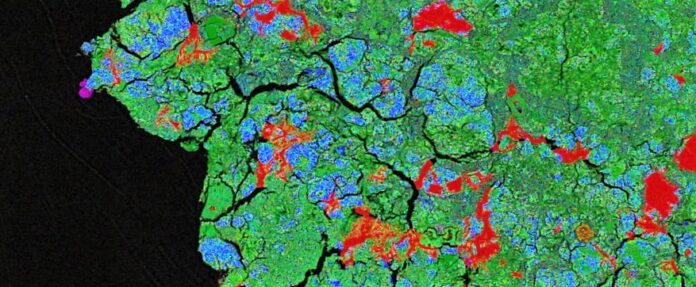Introduction: Analyzing the Winchcombe Meteorite
In February 2021, the renowned Winchcombe meteorite fell from the sky and crashed into the English terrain, initiating an investigation into its cosmic composition. Upon initial analysis, the Winchcombe meteorite was found to have already undergone a significant transformation due to contamination from the terrestrial atmosphere and ground. The once-pristine meteorite had experienced the development of salts and minerals such as halite and calcite after breaking apart in the Earth’s atmosphere, revealing the profound effects of its immediate surroundings.
Contamination Challenges for Meteorite Studies
Laura Jenkins, an Earth scientist at the University of Glasgow, and her research colleagues have pointed out the pressing need to consider contamination when studying meteorite fragments. As revealed by the Winchcombe meteorite study, even the asteroid Ryugu’s fragments delivered to Earth in 2020 and the intended samples from the surface of Mars are susceptible to contamination. The study’s findings could pave the way for safeguarding newly discovered meteorites and geological samples obtained from space to prevent their contamination by terrestrial agents.
Immediate Contamination: The Truth About Pristine Meteorites
The research conducted by Jenkins and her team has highlighted a key revelation: there is no such thing as a “pristine” meteorite. With contamination initiating almost immediately after entering the Earth’s atmosphere, the Winchcombe meteorite’s initial impression of being a pristine example of a CM chondrite meteorite was debunked. The meteorite underwent extensive contamination within hours of entering the Earth’s atmosphere.
Study Methods: Analyzing the Contaminated Meteorite
Jenkins and her team conducted various examinations, including scanning electron microscopy, Raman spectroscopy, and transmission electron microscopy, on different samples from the meteorite, including one from the driveway and several from sheep fields. Their study uncovered that calcite and calcium sulfates had formed on the fusion crust of the meteorite samples found in the sheep field. Additionally, halite was found on a polished section of the driveway sample that had been recovered post-impact.
Conclusion: Redefining Meteorite Storage and Understanding
The study by Jenkins and her team has revealed the importance of storing meteorites in a carefully controlled environment to prevent their contamination by terrestrial agents. Accurately identifying extra-terrestrial and terrestrial phases in meteorites such as Winchcombe can enhance our understanding of their formation and also aid in comparing meteorites that have landed on Earth with those collected by sample-return missions. By embracing this new approach, researchers can develop better methods for preserving the pristine nature of meteorites and enhance our knowledge of the cosmos.














